European Collaborators Define Dermcidin's Mode of Action
|
By LabMedica International staff writers Posted on 06 Mar 2013 |
A team of European molecular biologists have published the crystal structure and functional mechanism of the human antimicrobial peptide dermcidin.
Dermcidin (DCD) is a human antimicrobial peptide (AMP) that is constitutively expressed in sweat glands and secreted into sweat. By postsecretory proteolytic processing in human sweat, the precursor protein gives rise to several short DCD peptides varying in length from 25 to 48 amino acids and with net charges between minus two and plus two. Several DCD peptides show antimicrobial activity against pathogenic microorganisms such as Staphylococcus aureus, Escherichia coli, Enterococcus faecalis, Candida albicans, Staphylococcus epidermidis, Pseudomonas putida, and methicillin-resistant S. aureus as well as rifampin- and isoniazid-resistant Mycobacterium tuberculosis. DCD-derived peptides are active under high-salt conditions and in a buffer resembling human sweat. These peptides have diverse and overlapping spectra of activity that are independent of the net peptide charge, and previous studies showed that DCD peptides interacted with the bacterial cell envelope and killed gram-negative bacteria without forming pores in membranes.
Investigators at the University of Edinburgh (United Kingdom), the Max Planck Institute for Biophysical Chemistry (Goettingen, Germany), the Max Planck Institute for Developmental Biology (Tübingen, Germany), and the University of Strasbourg (France) collaborated in the effort to define the mode of action of DCD at the molecular and atomic levels.
In the February 20, 2013, online edition of the journal Proceedings of the National Academy of Sciences of the United States of America (PNAS) they presented the X-ray crystal structure as well as solid-state NMR spectroscopy, electrophysiology, and molecular dynamic simulations of this major human antimicrobial.
The results demonstrated that dermcidin formed an architecture of high-conductance transmembrane channels, composed of zinc-connected trimers of antiparallel helix pairs. Molecular dynamics simulations elucidated the unusual membrane permeation pathway for ions and showed adjustment of the pore to various membranes. Water and charged particles were able to flow uncontrollably across the membrane, eventually killing harmful microbes.
The authors predicted that their findings may form a foundation for the structure-based design of a new generation of peptide antibiotics.
Related Links:
University of Edinburgh
Max Planck Institute for Biophysical Chemistry
Max Planck Institute for Developmental Biology
Dermcidin (DCD) is a human antimicrobial peptide (AMP) that is constitutively expressed in sweat glands and secreted into sweat. By postsecretory proteolytic processing in human sweat, the precursor protein gives rise to several short DCD peptides varying in length from 25 to 48 amino acids and with net charges between minus two and plus two. Several DCD peptides show antimicrobial activity against pathogenic microorganisms such as Staphylococcus aureus, Escherichia coli, Enterococcus faecalis, Candida albicans, Staphylococcus epidermidis, Pseudomonas putida, and methicillin-resistant S. aureus as well as rifampin- and isoniazid-resistant Mycobacterium tuberculosis. DCD-derived peptides are active under high-salt conditions and in a buffer resembling human sweat. These peptides have diverse and overlapping spectra of activity that are independent of the net peptide charge, and previous studies showed that DCD peptides interacted with the bacterial cell envelope and killed gram-negative bacteria without forming pores in membranes.
Investigators at the University of Edinburgh (United Kingdom), the Max Planck Institute for Biophysical Chemistry (Goettingen, Germany), the Max Planck Institute for Developmental Biology (Tübingen, Germany), and the University of Strasbourg (France) collaborated in the effort to define the mode of action of DCD at the molecular and atomic levels.
In the February 20, 2013, online edition of the journal Proceedings of the National Academy of Sciences of the United States of America (PNAS) they presented the X-ray crystal structure as well as solid-state NMR spectroscopy, electrophysiology, and molecular dynamic simulations of this major human antimicrobial.
The results demonstrated that dermcidin formed an architecture of high-conductance transmembrane channels, composed of zinc-connected trimers of antiparallel helix pairs. Molecular dynamics simulations elucidated the unusual membrane permeation pathway for ions and showed adjustment of the pore to various membranes. Water and charged particles were able to flow uncontrollably across the membrane, eventually killing harmful microbes.
The authors predicted that their findings may form a foundation for the structure-based design of a new generation of peptide antibiotics.
Related Links:
University of Edinburgh
Max Planck Institute for Biophysical Chemistry
Max Planck Institute for Developmental Biology
Latest BioResearch News
- Genome Analysis Predicts Likelihood of Neurodisability in Oxygen-Deprived Newborns
- Gene Panel Predicts Disease Progession for Patients with B-cell Lymphoma
- New Method Simplifies Preparation of Tumor Genomic DNA Libraries
- New Tool Developed for Diagnosis of Chronic HBV Infection
- Panel of Genetic Loci Accurately Predicts Risk of Developing Gout
- Disrupted TGFB Signaling Linked to Increased Cancer-Related Bacteria
- Gene Fusion Protein Proposed as Prostate Cancer Biomarker
- NIV Test to Diagnose and Monitor Vascular Complications in Diabetes
- Semen Exosome MicroRNA Proves Biomarker for Prostate Cancer
- Genetic Loci Link Plasma Lipid Levels to CVD Risk
- Newly Identified Gene Network Aids in Early Diagnosis of Autism Spectrum Disorder
- Link Confirmed between Living in Poverty and Developing Diseases
- Genomic Study Identifies Kidney Disease Loci in Type I Diabetes Patients
- Liquid Biopsy More Effective for Analyzing Tumor Drug Resistance Mutations
- New Liquid Biopsy Assay Reveals Host-Pathogen Interactions
- Method Developed for Enriching Trophoblast Population in Samples
Channels
Clinical Chemistry
view channel
3D Printed Point-Of-Care Mass Spectrometer Outperforms State-Of-The-Art Models
Mass spectrometry is a precise technique for identifying the chemical components of a sample and has significant potential for monitoring chronic illness health states, such as measuring hormone levels... Read more.jpg)
POC Biomedical Test Spins Water Droplet Using Sound Waves for Cancer Detection
Exosomes, tiny cellular bioparticles carrying a specific set of proteins, lipids, and genetic materials, play a crucial role in cell communication and hold promise for non-invasive diagnostics.... Read more
Highly Reliable Cell-Based Assay Enables Accurate Diagnosis of Endocrine Diseases
The conventional methods for measuring free cortisol, the body's stress hormone, from blood or saliva are quite demanding and require sample processing. The most common method, therefore, involves collecting... Read moreMolecular Diagnostics
view channelBlood Proteins Could Warn of Cancer Seven Years before Diagnosis
Two studies have identified proteins in the blood that could potentially alert individuals to the presence of cancer more than seven years before the disease is clinically diagnosed. Researchers found... Read moreUltrasound-Aided Blood Testing Detects Cancer Biomarkers from Cells
Ultrasound imaging serves as a noninvasive method to locate and monitor cancerous tumors effectively. However, crucial details about the cancer, such as the specific types of cells and genetic mutations... Read moreHematology
view channel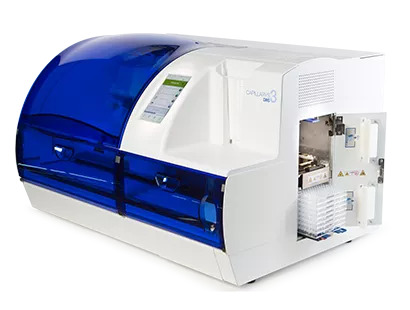
Next Generation Instrument Screens for Hemoglobin Disorders in Newborns
Hemoglobinopathies, the most widespread inherited conditions globally, affect about 7% of the population as carriers, with 2.7% of newborns being born with these conditions. The spectrum of clinical manifestations... Read more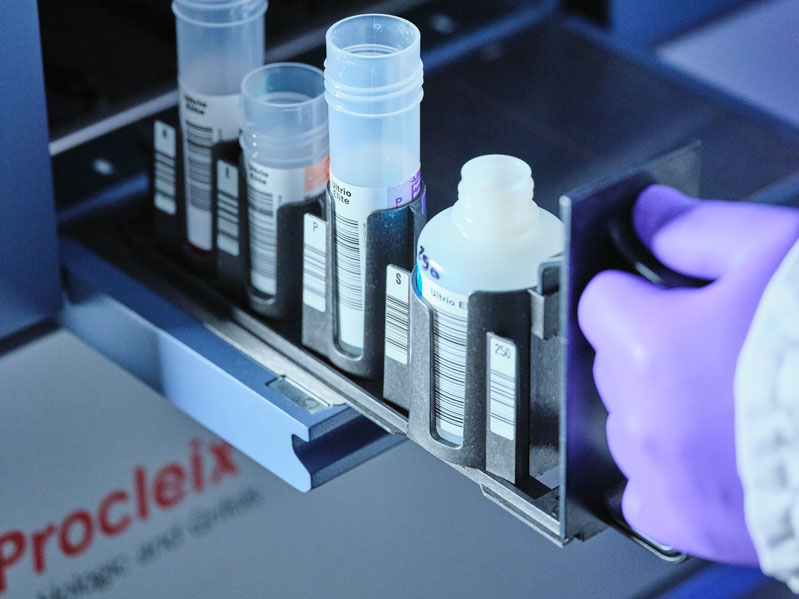
First 4-in-1 Nucleic Acid Test for Arbovirus Screening to Reduce Risk of Transfusion-Transmitted Infections
Arboviruses represent an emerging global health threat, exacerbated by climate change and increased international travel that is facilitating their spread across new regions. Chikungunya, dengue, West... Read more
POC Finger-Prick Blood Test Determines Risk of Neutropenic Sepsis in Patients Undergoing Chemotherapy
Neutropenia, a decrease in neutrophils (a type of white blood cell crucial for fighting infections), is a frequent side effect of certain cancer treatments. This condition elevates the risk of infections,... Read more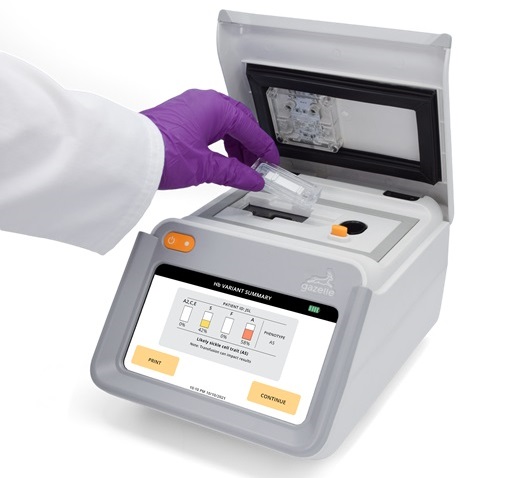
First Affordable and Rapid Test for Beta Thalassemia Demonstrates 99% Diagnostic Accuracy
Hemoglobin disorders rank as some of the most prevalent monogenic diseases globally. Among various hemoglobin disorders, beta thalassemia, a hereditary blood disorder, affects about 1.5% of the world's... Read moreImmunology
view channel.jpg)
AI Predicts Tumor-Killing Cells with High Accuracy
Cellular immunotherapy involves extracting immune cells from a patient's tumor, potentially enhancing their cancer-fighting capabilities through engineering, and then expanding and reintroducing them into the body.... Read more
Diagnostic Blood Test for Cellular Rejection after Organ Transplant Could Replace Surgical Biopsies
Transplanted organs constantly face the risk of being rejected by the recipient's immune system which differentiates self from non-self using T cells and B cells. T cells are commonly associated with acute... Read more
AI Tool Precisely Matches Cancer Drugs to Patients Using Information from Each Tumor Cell
Current strategies for matching cancer patients with specific treatments often depend on bulk sequencing of tumor DNA and RNA, which provides an average profile from all cells within a tumor sample.... Read more
Genetic Testing Combined With Personalized Drug Screening On Tumor Samples to Revolutionize Cancer Treatment
Cancer treatment typically adheres to a standard of care—established, statistically validated regimens that are effective for the majority of patients. However, the disease’s inherent variability means... Read moreMicrobiology
view channel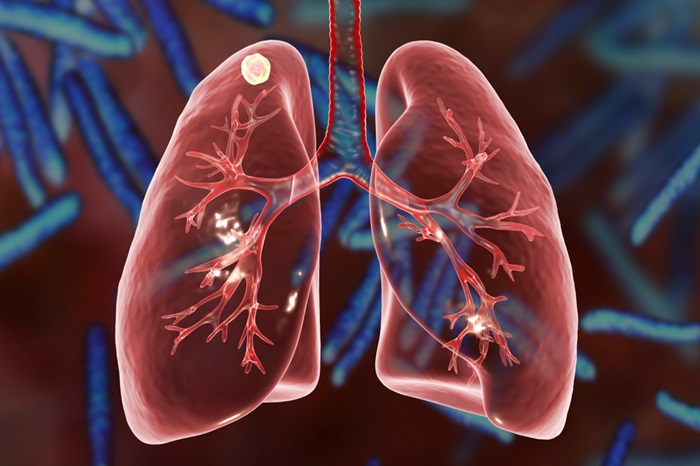
Integrated Solution Ushers New Era of Automated Tuberculosis Testing
Tuberculosis (TB) is responsible for 1.3 million deaths every year, positioning it as one of the top killers globally due to a single infectious agent. In 2022, around 10.6 million people were diagnosed... Read more
Automated Sepsis Test System Enables Rapid Diagnosis for Patients with Severe Bloodstream Infections
Sepsis affects up to 50 million people globally each year, with bacteraemia, formerly known as blood poisoning, being a major cause. In the United States alone, approximately two million individuals are... Read moreEnhanced Rapid Syndromic Molecular Diagnostic Solution Detects Broad Range of Infectious Diseases
GenMark Diagnostics (Carlsbad, CA, USA), a member of the Roche Group (Basel, Switzerland), has rebranded its ePlex® system as the cobas eplex system. This rebranding under the globally renowned cobas name... Read more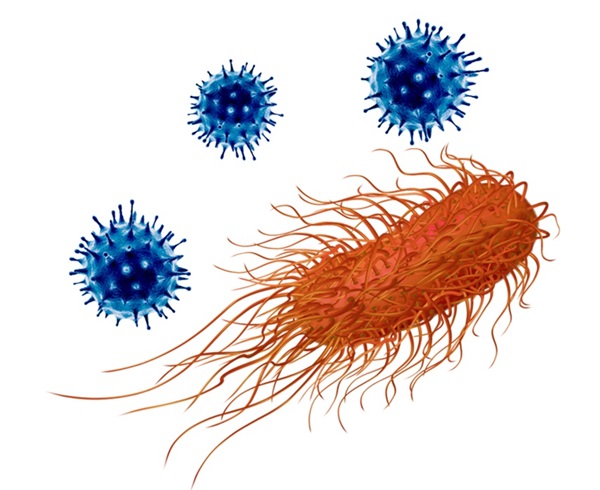
Clinical Decision Support Software a Game-Changer in Antimicrobial Resistance Battle
Antimicrobial resistance (AMR) is a serious global public health concern that claims millions of lives every year. It primarily results from the inappropriate and excessive use of antibiotics, which reduces... Read morePathology
view channelHyperspectral Dark-Field Microscopy Enables Rapid and Accurate Identification of Cancerous Tissues
Breast cancer remains a major cause of cancer-related mortality among women. Breast-conserving surgery (BCS), also known as lumpectomy, is the removal of the cancerous lump and a small margin of surrounding tissue.... Read more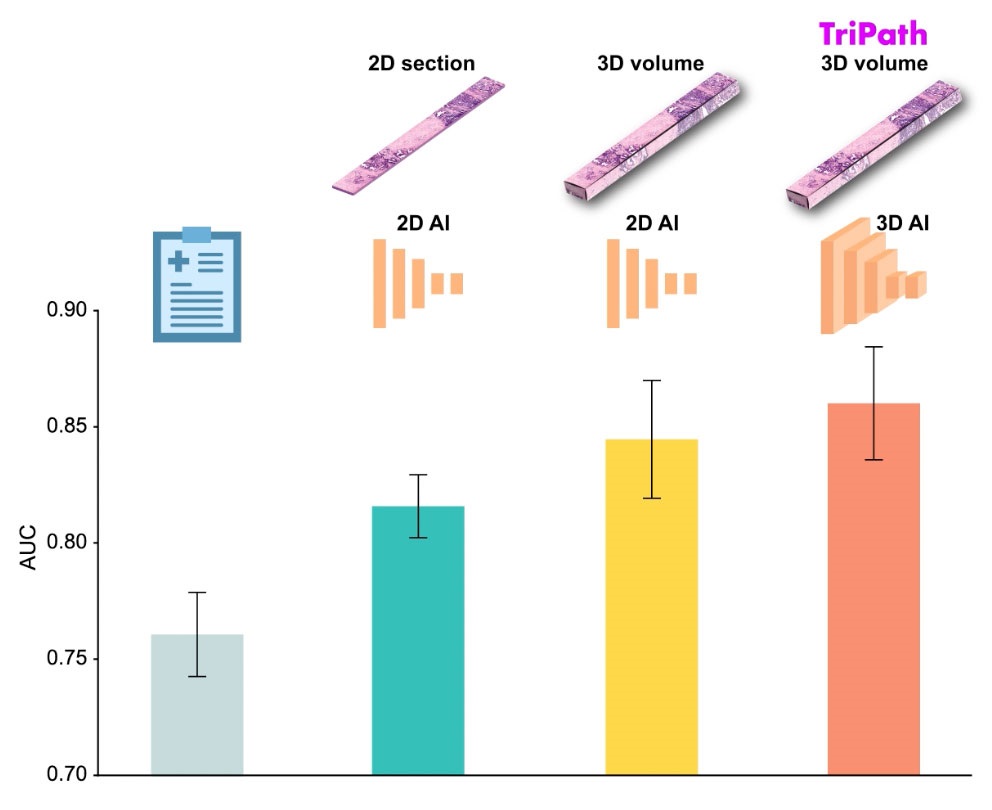
AI Advancements Enable Leap into 3D Pathology
Human tissue is complex, intricate, and naturally three-dimensional. However, the thin two-dimensional tissue slices commonly used by pathologists to diagnose diseases provide only a limited view of the... Read more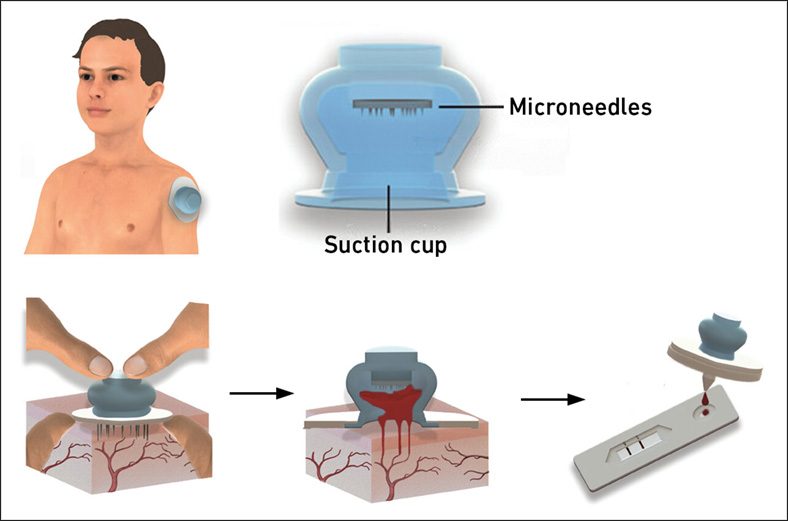
New Blood Test Device Modeled on Leeches to Help Diagnose Malaria
Many individuals have a fear of needles, making the experience of having blood drawn from their arm particularly distressing. An alternative method involves taking blood from the fingertip or earlobe,... Read more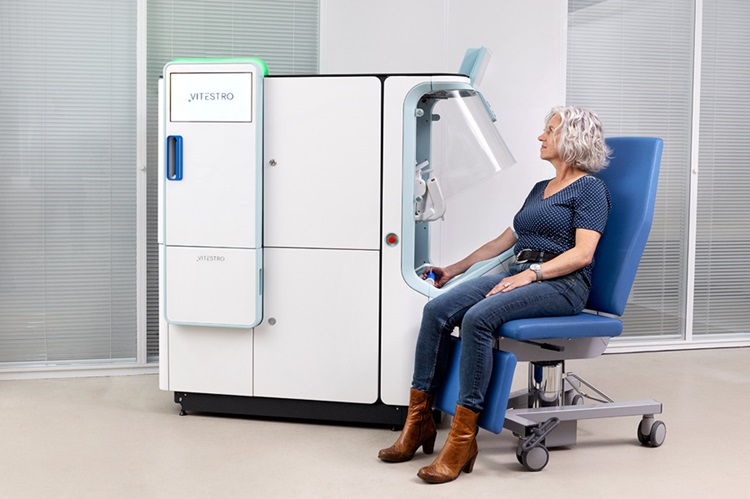
Robotic Blood Drawing Device to Revolutionize Sample Collection for Diagnostic Testing
Blood drawing is performed billions of times each year worldwide, playing a critical role in diagnostic procedures. Despite its importance, clinical laboratories are dealing with significant staff shortages,... Read moreTechnology
view channel
New Diagnostic System Achieves PCR Testing Accuracy
While PCR tests are the gold standard of accuracy for virology testing, they come with limitations such as complexity, the need for skilled lab operators, and longer result times. They also require complex... Read more
DNA Biosensor Enables Early Diagnosis of Cervical Cancer
Molybdenum disulfide (MoS2), recognized for its potential to form two-dimensional nanosheets like graphene, is a material that's increasingly catching the eye of the scientific community.... Read more
Self-Heating Microfluidic Devices Can Detect Diseases in Tiny Blood or Fluid Samples
Microfluidics, which are miniature devices that control the flow of liquids and facilitate chemical reactions, play a key role in disease detection from small samples of blood or other fluids.... Read more
Breakthrough in Diagnostic Technology Could Make On-The-Spot Testing Widely Accessible
Home testing gained significant importance during the COVID-19 pandemic, yet the availability of rapid tests is limited, and most of them can only drive one liquid across the strip, leading to continued... Read moreIndustry
view channel
Danaher and Johns Hopkins University Collaborate to Improve Neurological Diagnosis
Unlike severe traumatic brain injury (TBI), mild TBI often does not show clear correlations with abnormalities detected through head computed tomography (CT) scans. Consequently, there is a pressing need... Read more
Beckman Coulter and MeMed Expand Host Immune Response Diagnostics Partnership
Beckman Coulter Diagnostics (Brea, CA, USA) and MeMed BV (Haifa, Israel) have expanded their host immune response diagnostics partnership. Beckman Coulter is now an authorized distributor of the MeMed... Read more_1.jpg)







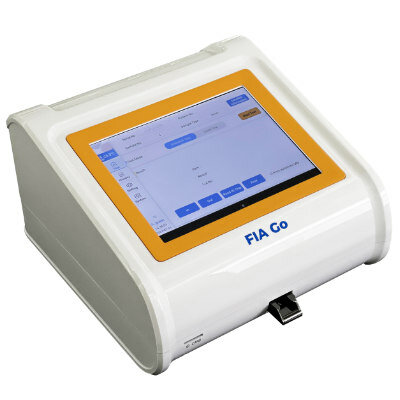

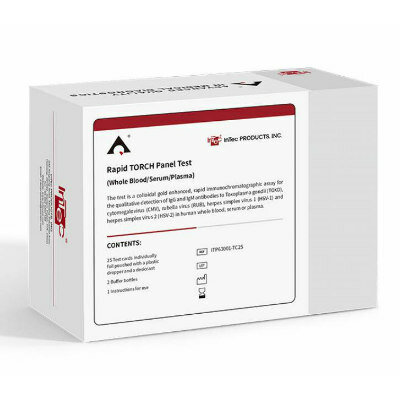


_1.jpg)
.jpg)
